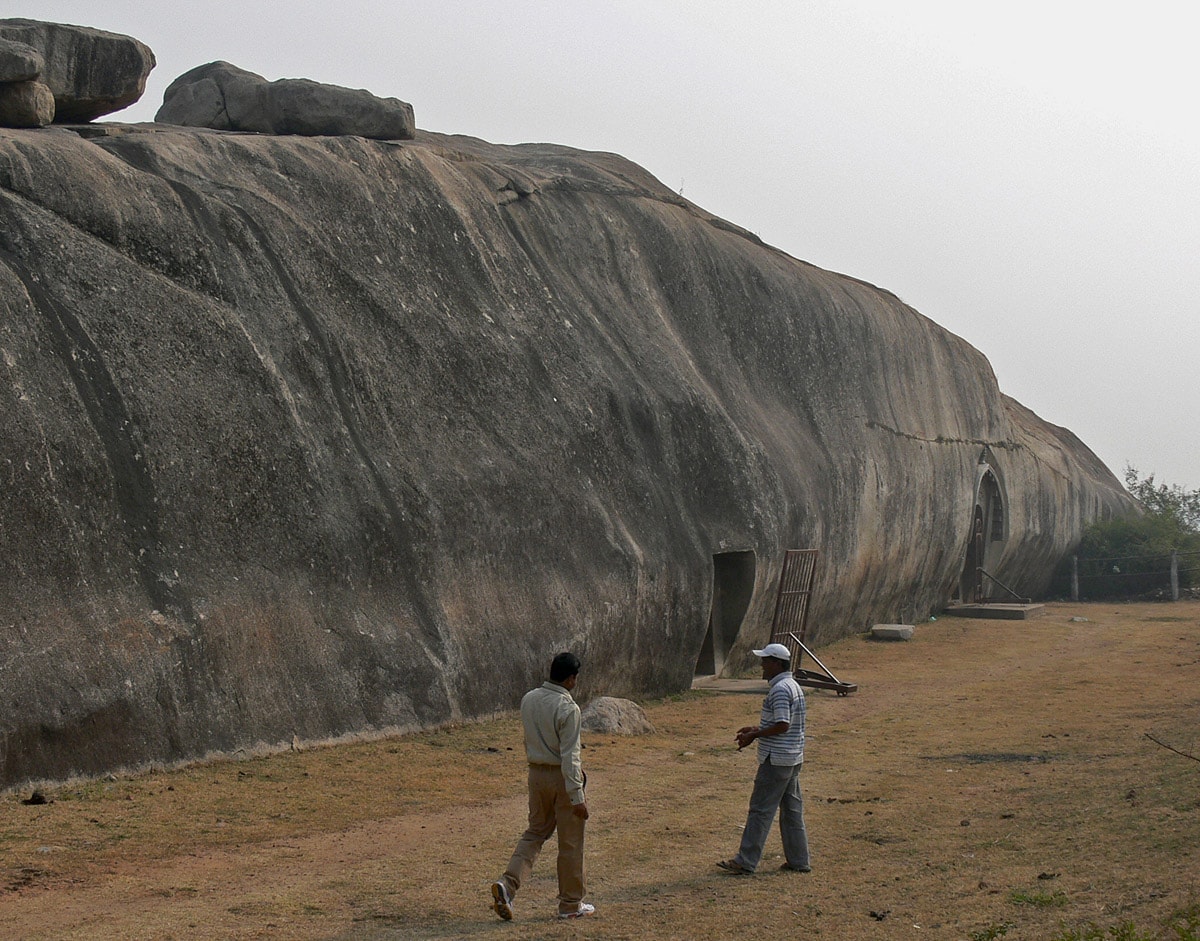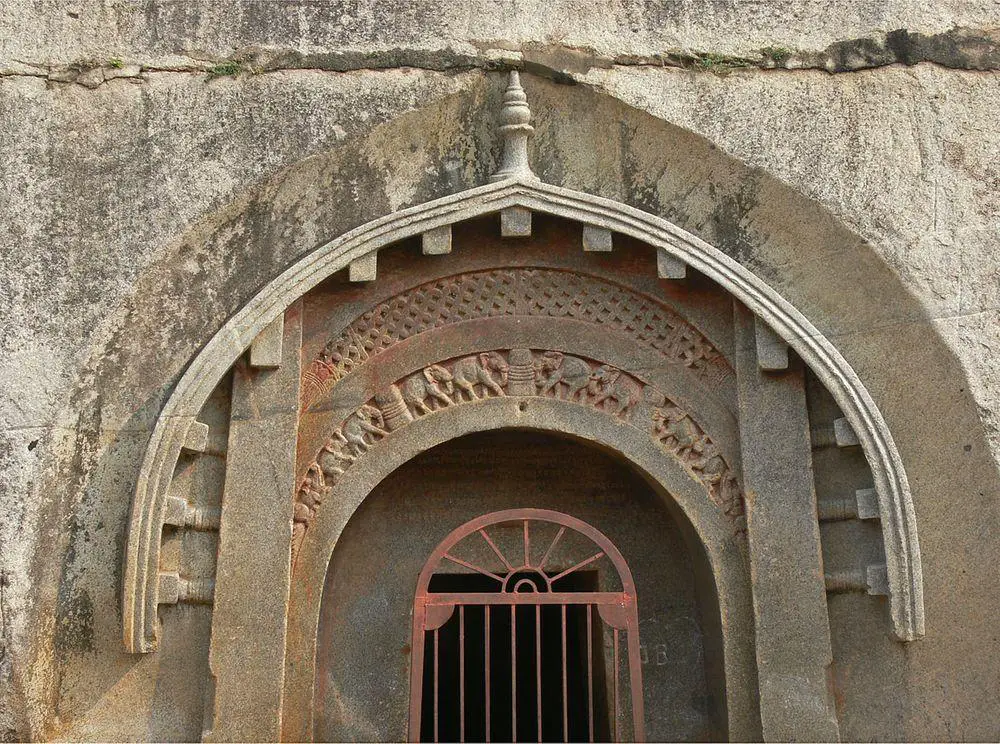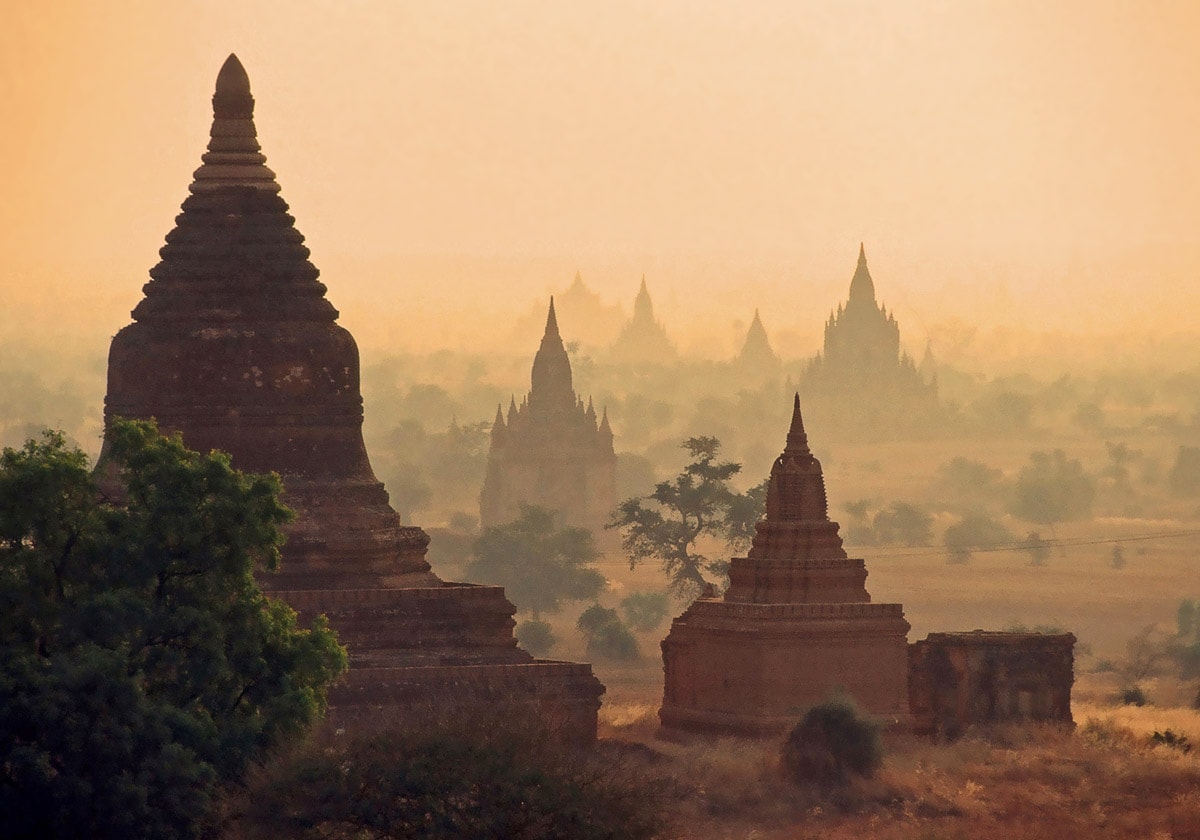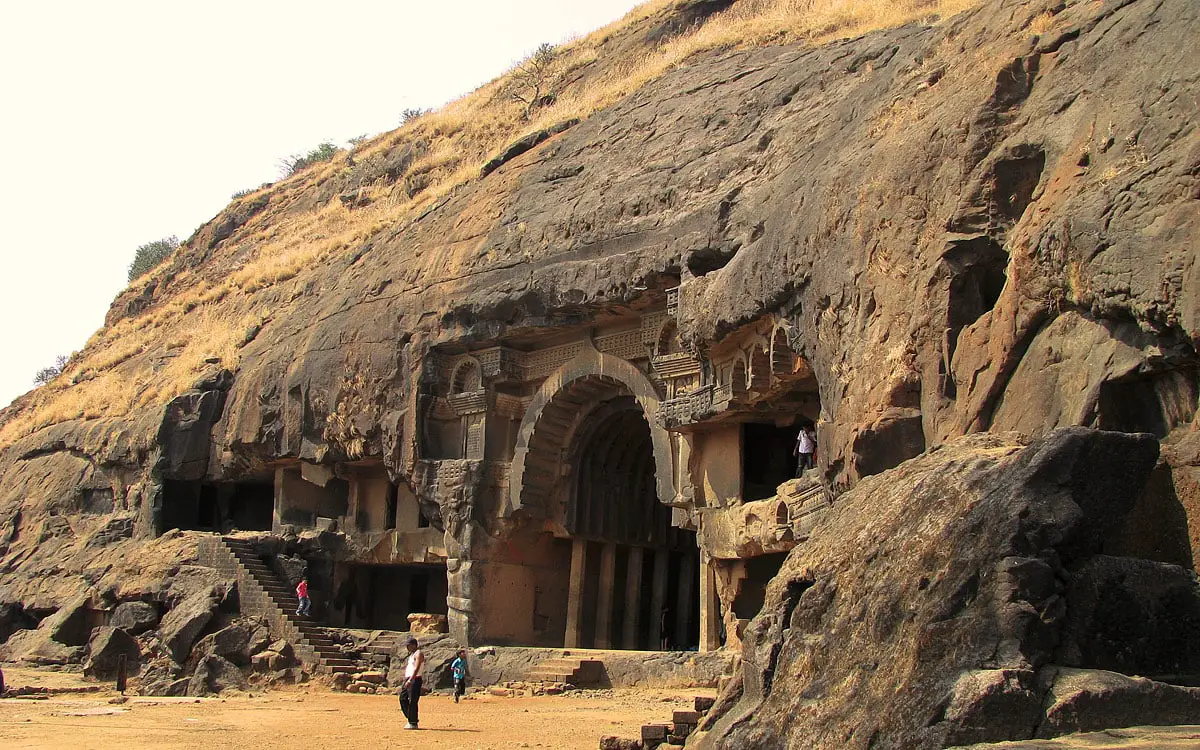Hindu shrines 🢔 Religious architecture 🢔 Archaeological wonders 🢔 Categories of wonders
Wonder
Barabar Caves

 In short
In short
Most likely no other country in the world is that rich with exquisite cave temples as India – there are more than 1000 locations with such temples. Some of the earliest rock-cut temples in India are Barabar Caves. While some scientists consider Babarbar Caves to be the oldest ones, some others though consider that the mysterious Son Bhandar Caves in Rajgir are a bit older.
 49.8%
49.8%
GPS coordinates
Age
Alternate names
Religion
Map of the site
If you see this after your page is loaded completely, leafletJS files are missing.
 In detail
In detail
Most likely Barabar caves were hewn in the monolithic granite cliff during the reign of the great Mauryan king Ashoka (Asoka) – at least inscriptions on the walls of caves tell that king Ashoka dedicated some cave chambers to Ajivika followers.
One of the alternate names of Barabar Caves – Satgharwa – means "seven houses" – some consider that this refers to seven rooms in Barabar Caves, but some – that this refers to seven caves of this area – four in Barabar and three – in nearby Nagarjuni Hills (see Nagarjuni Caves).
Caves were discovered in the Western world through a thorough description made by Alexander Cunningham in 1868.
Legendary temples
In some respects the mouth of one cave – Lomas Rishi – resembles also the Doors of Durin leading to the Mines of Moria in the fiction of J.R.R.Tolkien. Even a mysterious inscription is there.
These caves seem to be mentioned in "Mahabharatha" under name "Gorathgiri" – the same place name has been identified on cliff inscriptions at Barabar as well.
More recent and famous work where these caves take significant role, is a novel by E.M.Forster "A Passage to India".
Ajivika

King Ashoka (reigned in 273 – 232 BC) and his son Dasaratha were Buddhists but their state had religious freedom. Several Jain sects and branches flourished in this time among other religious and philosophical trends.
One of such trends was Ajivika (Ājīvika) – considered by many to be a separate belief – in some respects rather an atheistic movement in philosophy. This deeply ascetic movement originated a few centuries earlier together with Buddhism and was characterized by a belief in determinism. In Hinduist and Buddhist sources practitioners of Ajivika were presented as strict fatalists.
Father of Ashoka was a believer of this philosophy and during Ashoka’s time, it reached its peak of popularity. This belief has not survived up to this day and in fact, there is little known about it. Unfortunately, no original scriptures of this ancient philosophy have survived.
Secrets of Barabar cliff
The granitic (rather – quartzite gneiss) monolith of Barabar cliff north from the Punpun River near its mouth in Phalgu River resembles a dark, sinister submarine rising from the soil. It is located at the base of the 300 meters high Siddheshwar mountain – an interesting place with a later Shiva Temple and remnants of fortification on its top and some ancient cliff carvings as well.
Interesting peculiarity of caves is their highly polished surfaces (famous "Mauryan polish") and high degree of symmetry – in fact it is not quite clear how people 2,200 years ago did this.
Barabar cliff is approximately 200 meters long and contains several very interesting monuments of history, notably – four rock-cut caves. These caves are hewn out in the very hard monolithic stone and only one – Lomas Rishi has masonry details at the entrance portal. Entrance portals in several caves (Karan Chaupar, Visva Zopri) resemble Egyptian architecture to some researchers. These portals with sloping jambs in the desolate landscape somehow resemble also sights from “Star Wars” movies.
Three caves have two chambers. The first chamber is a large, rectangular hall (mandapa), here gathered worshippers. The second chamber is smaller, circular, with a domed ceiling. This was a place of worship, possibly with some sanctum (like stupa) in the center. Now, these chambers are empty. It has been speculated that these circular premises have been inspired by the ancient beehive houses.
The four caves
Northern side of the hill contains cave named Karan Chaupar (also Karna Chaupar, Karan Chopar, Karnachopar) with floor area 10 x 4.2 m. The barrel vault over the chamber is up to 3.3 m high. At the western end of the room, there is a platform – the only unpolished detail. To the right from the entrance there are seen traces of inscription from 245 BC – cave here is named Supiya and hill – Khalatika: "The King’s Grace, when he had been consecrated nineteen years, granted the (?) Supiya Cave in the (?) Khalatika Hill for as long as sun and moon endure." (4). Later it has been named also Bodhimula (The root of intelligence), Daridra Kandara (the cave of the poor).
Further to the west during some unknown times were hewn two human figures and lingam in the smooth surface of the stone. The southern side of the hill has two very interesting caves.
Lomas Rishi is one of the oldest rock-cut chambers in India. It consists of rectangular, partly polished mandapa – with an unfinished barrel vault, through the doorway connected to a circular, domed, unpolished chamber. Cave has an interesting, arch-shaped entrance portal, imitating a wooden structure of time – it seems as if the barrel vault continues as an arch-shaped portal outside. The doorway is adorned with a procession of elephants going upwards to the stupa symbol adorning the keystone of the arch. The cave contains an inscription from later times – the 7th – 8th century AD referring to kings Sarddulavarman and his son Anantarvarman, Maukhari dynasty. Inscription mentions, that Anantarvarman placed an image of Lord Krishna in the cave. Above this cave, in 1914 there was discovered an inscription which names the hill – Gorathagiri – name mentioned in Mahabharatha.
Unfortunately lately cracks have developed in the cave and water during the rain is seeping in.
Sudama (Sumdava, Saad Dharma, Nigoha-Kubha) – another oldest cave in complex, located opposite the Karan Chaupar and close to Lomas Rishi. The entrance of this cave is simple, functional. Consists of two rooms. The first – mandapa – is 10×6 m large, barrel vault up to 3,5 m high. Through a doorway, it is connected to a circular, domed chamber with a diameter of 6 m. At the eastern end of mandapa, there is a shallow, roughly shaped recess – most likely an unfinished extension. According to an inscription in ancient Brahmi writing, the cave is dedicated by Ashoka in the 12th year of his reign (261 BC), the cave is named "Nigoha-Kubha" – “banyan tree cave”. The inscription reads “This Banyan-tree cave was granted to Ajivikas by the King’s Grace when he had been consecrated twelve years.” (4)
This cave has the most amazing polishment, and it feels as if the cave has been layered with a sheet of glass.
Most likely this cave in earlier times had a more complex entrance portal – excavations have unearthed pieces of pillars.
Fourth cave – Visva Zopri (Vishajhopri, Visvajhopri) – can be reached by simple steps cut in stone – "Ashoka Steps" 500 – 1000 metres north-west from the other three caves in south-facing cliff face. The entrance in the cave is simple, square cut. The walls of the cave are not polished. This cave also has two chambers – both have approximately cubical form and are connected through a doorway. Both cubes have approximately 2 m long sides. The cave contains several lines of Brahmi inscription: "This cave in Khalatika Hill was granted to the Ajivikas by the King’s Grace when he had been consecrated twelve years." (4)
Echo effect
The most unusual feature of caves is their echo effect. Vault and the polished walls in the enclosed, small room make perfect conditions for making otherworldly sounds. Reverberation continues for several seconds and the initial sound is continuously changing. Most likely the walls were polished exactly for the attainment of this echo effect – it must have served well for religious experiences during the chants.
References
- The Barabar Caves. A Passage to India by David Lean – last accessed on 21.03.2010.
- Barabar Hills. The Buddhist Heritage – last accessed on 21.03.2010.
- Adwaita P. Ganguly. India, Mystic, Complex, and Real: A Detailed Study of E.M. Forster’s a Passage to India : His Treatment of India’s Landscape, History, Social Anthropology…. 1990.
- Vincent Arthur Smith: Ashoka: The Buddhist Emperor of India. Clarendon, Oxford 1920.
 Linked articles
Linked articles

Wonders of India
India is the seventh-largest country in the world by area, and, naturally, such a large area contains a huge amount of exciting attractions…
Wondermondo considers that India is the second richest center of architectural heritage in the world after Europe and maybe no single country in the world can match it in this respect.

Wonders of Asia
Any other continent (and part of the world) seems small if compared to Asia. This refers also to natural and man-made heritage: in Asia are not just thousands of great landmarks, there are found landmarks created by thousands of diverse cultures from ancient Phoenicians to the mysterious small people in the Philippines and eastern islands of Indonesia.

Rock-cut architecture and sculptures
Rock-cut architecture is a very ancient form of architecture – the oldest structures are more than 5 thousand years old. The resistivity of the natural stone and the constant climate inside these structures has preserved many art values around the world.
 Recommended books
Recommended books
In The Orient
The stories in this collection are in general set in India, Southeast Asia, and Indonesia, places to which the author traveled while living and teaching in Japan, a country which is situated in such a way so that it provides a gateway to other countries in the Far East.
Illustrations Of The Rock-cut Temples Of India
This is a reproduction of a book published before 1923.
We believe this work is culturally important, and despite the imperfections, have elected to bring it back into print as part of our continuing commitment to the preservation of printed works worldwide.


